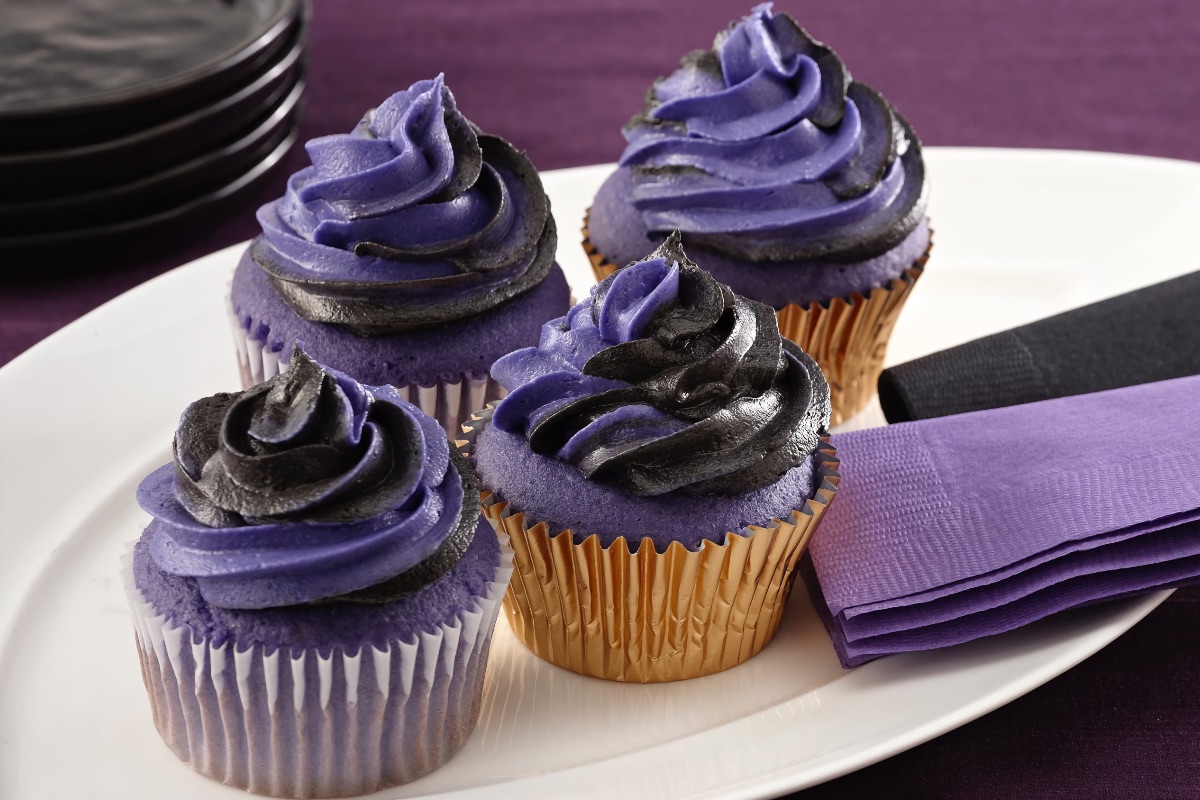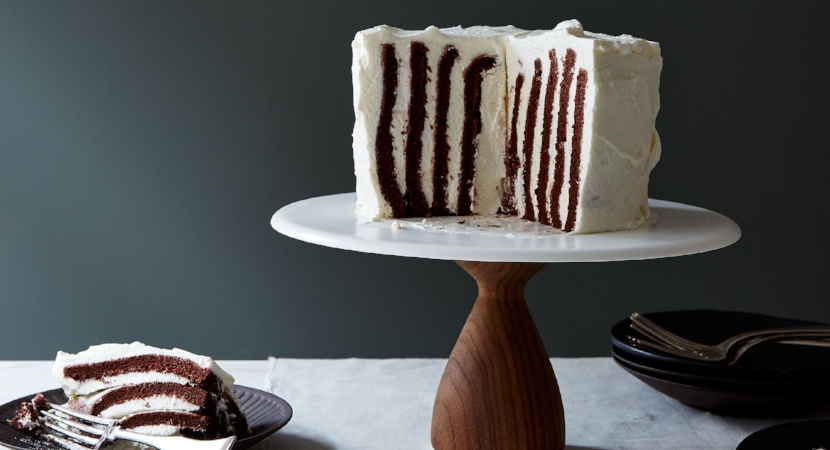"It might be the most valuable journalistic work I’ve ever done."
That's reporter Tom Scocca, who has covered presidential elections and the Supreme Court nominations, reflecting on a piece he wrote five years ago for Slate in which he snuffed out recipe writers' biggest, baddest fib: the time it takes to caramelize onions.
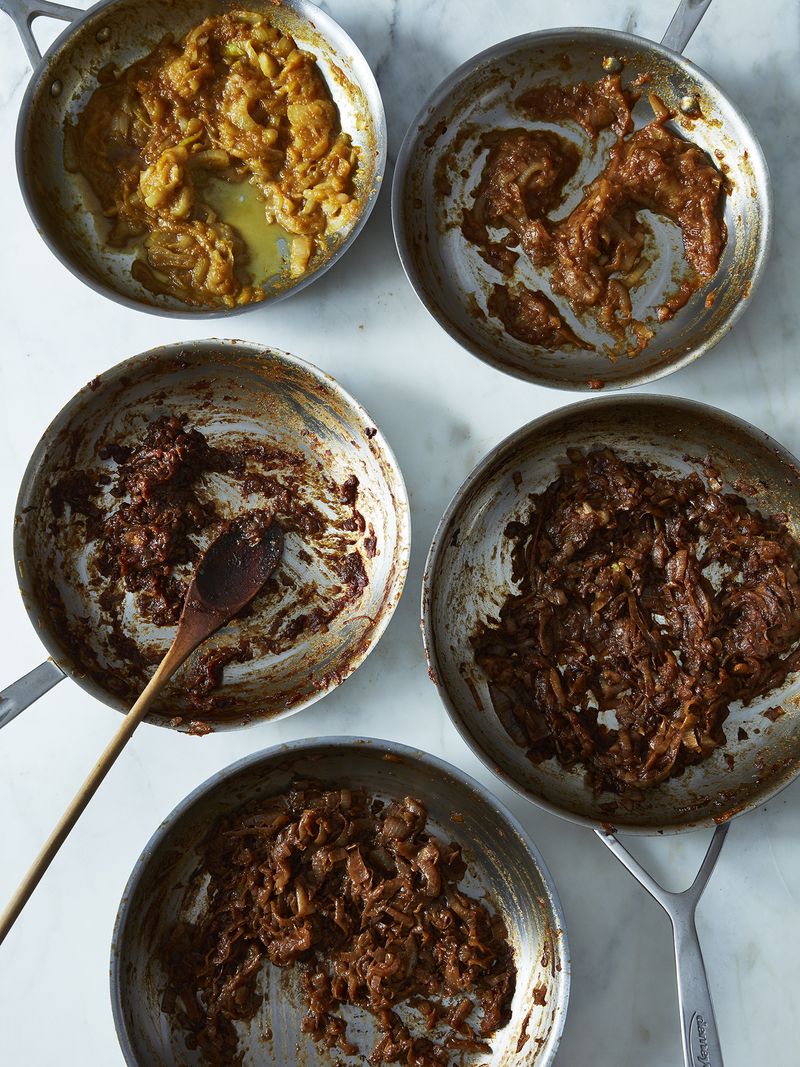
Just imagine the soup! Photo by James Ransom
The article, which indicted everyone from Melissa Clark (10 minutes to become "soft and caramelized," she says!) to Madhur Jaffrey (5 minutes for a "medium-brown colour"!), resurfaced last month, when Scocca realized that the featured Google search result for "How long does it take to caramelize onions?" drew—and, to add salt to the wound, directly from his article—on the very information his entire piece had set out to expose as false: "about 5 minutes."
(Since this revelation, the Google search results have been adjusted, now pulling a more relevant quote from his original Slate article.)
On Food52, we, too, have a lot of mixed information about onion caramelization in our archives. Some recipes say it takes 45 minutes to 1 hour to caramelize diced onions, while others recommend 30 to 40 minutes for thin slices.
The inconsistency isn't surprising: Our recipes are developed in the kitchens of home cooks who are using pans, different stoves, and different types of onions—and who are judging with their eyes and ears rather than by the time on the clock.
But to see how long caramelizing onions really take—and what they look like along the way—we caramelized three pans of onions (three onions, 1 tablespoon of butter, a stainless steel pan) for 15, 30, and 60 minutes over medium-high heat. Whenever the fond (those caramelized sugars that stick to the bottom) started to build up, we deglazed with a tablespoon of water, scraped up all of the flavorful bits, and started the whole process again.
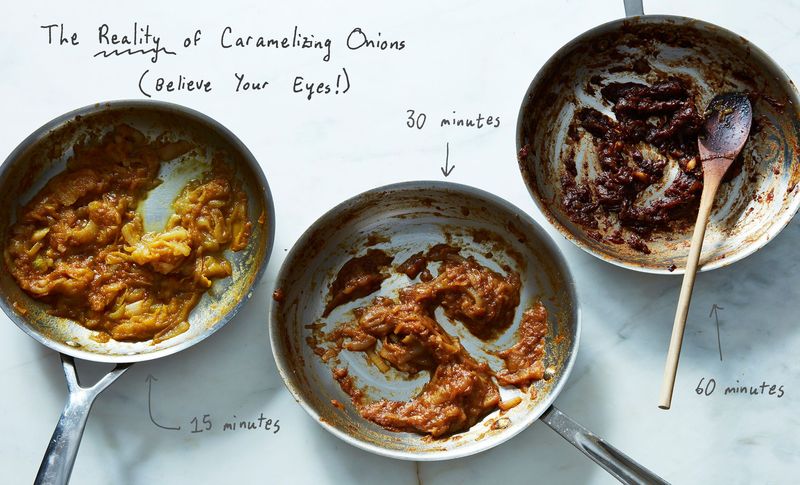
Which of these look "caramelized" to you? Photo by James Ransom
You'll see in the photo that the onion volume reduced dramatically (after 60 minutes, three onions had turned into about 1/2 cup of deeply caramelized onion shmoo); the color changed from yellowish orange to a deep auburn; and what was once-astringent and watery turned candy-sweet and butter-soft. With this method, there was no defying time (and no outsmarting patience). But then again, some cooks might consider the 30-minute pan to be caramelized to perfection (as opposed to obliteration)—and for some applications, a half-hour might be plenty of time, indeed.
Next, we tried two tricks that are supposed to speed up the process: (1) adding baking soda (read more about the science behind that here), and (2) starting with the pan covered. (Both techniques also call for a bit of added sugar in order to speed up the caramelization process.)
In the end, neither method was significantly faster than the nothing-added 60-minute technique. But the onions they yielded differed in sweetness and softness in a way that might actually be preferable to you depending on how you're putting the alliums to use.
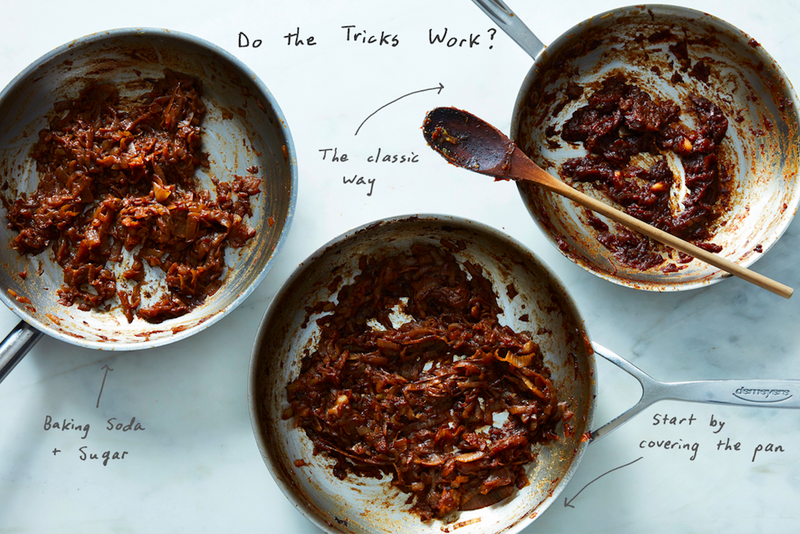
Would you consider all of these to be well caramelized? Photo by James Ransom
The shortcuts:
- Baking soda + sugar: In J. Kenji López-Alt's 15-Minute Caramelized Onions, you add add 1 teaspoon sugar and 1/4 teaspoon baking soda to 5 cups of finely sliced onions at the start of the cooking process. You cook over high heat, using the same fond-scraping technique "until onions are completely softened and a deep, dark brown, about 15 minutes total." It took us 40 minutes (not 15) to achieve the pan of onions in the photo above.
- Starting with the pan covered: In this technique, which we learned about from Deb Perelman, you cook the onions, covered, over very low heat for 15 minutes, then turn the heat up to medium-high, add 1/2 teaspoon of sugar, and cook, stirring frequently, for 15 to 20 minutes, until they’re a deep golden brown. It actually took us closer to 65 minutes (rather than 35) to get the onions in the pan above.
The results:
- The onions we cooked for 60 minutes were incomparably jammy and candy sweet—much sweeter than the onions in the other two pans even though this was the only technique that did not call for any added sugar. These are they type of onions that will melt into mashed potatoes or squash and sink into a flatbread. They were also the most depleted in volume, so be warned: If you're looking for a lot of these super-sweet, smooshy onions, you're gong to be doing a whole lot of slicing.
- While not as soft or deeply flavored as the 60-minute pan, the onions that were given a baking soda boost were softer, sweeter, and more evenly cooked than the pan of onions that started covered. The onions don't lose as much volume in this method as compared to the 60-minute pan—so if you're short on raw onions but still looking for a soft, melting texture, consider this route.
- The onions that started in a covered pan were a bit more scorched-tasting (perhaps because of the sudden transition from low to high heat) and slightly tangier than the other two pans. They held their shape the best of the group, making them good candidates for any place where you'd like your onions to keep their integrity rather than dissolve, like in a pasta or a curry.
So it doesn't take 5 or 10 minutes to caramelize onions. So the shortcuts might not be as speedy as they claim to be. But you can still get a pan of sweet, soft onions in 30 to 40 minutes.
But are they "caramelized"? Perhaps the problem lies not with our inconsistency about cook time but with our lack of specificity in regards to just how those onions should look, taste, and behave. What does caramelized mean? (I know—big sigh!) Are you looking for falling-apart, jammy onions? You'll need an hour. Or are you looking for onions that are just starting to turn from yellow to brown? You might only need 20 minutes.
If we can be more specific about our language—moving beyond "golden-brown" and "caramelized"—we'll be able to be more specific about cook times, too.
This article was written by Sarah Jampel from Food52 and was legally licensed through the NewsCred publisher network. Please direct all licensing questions to legal@newscred.com.



